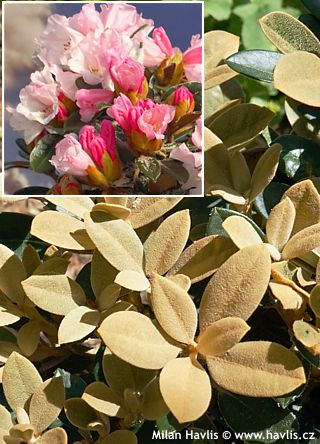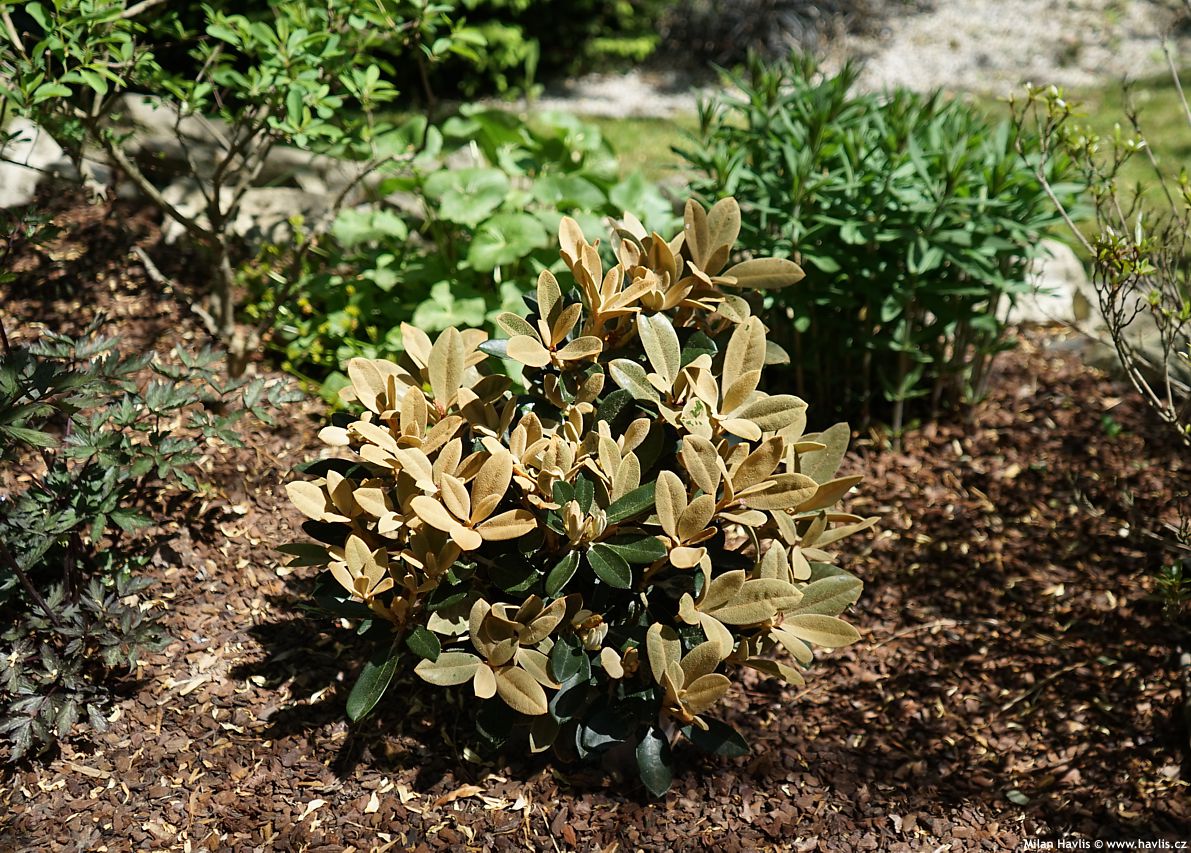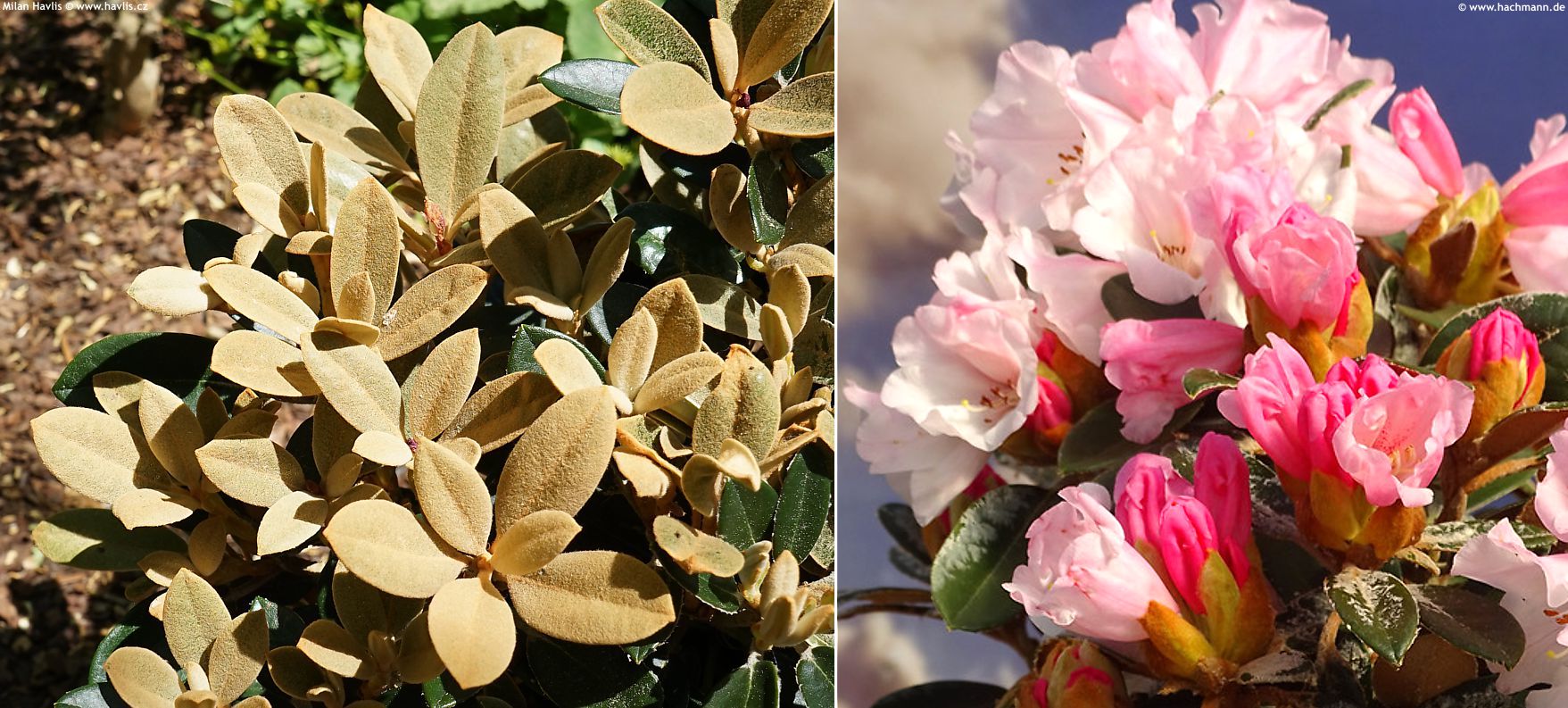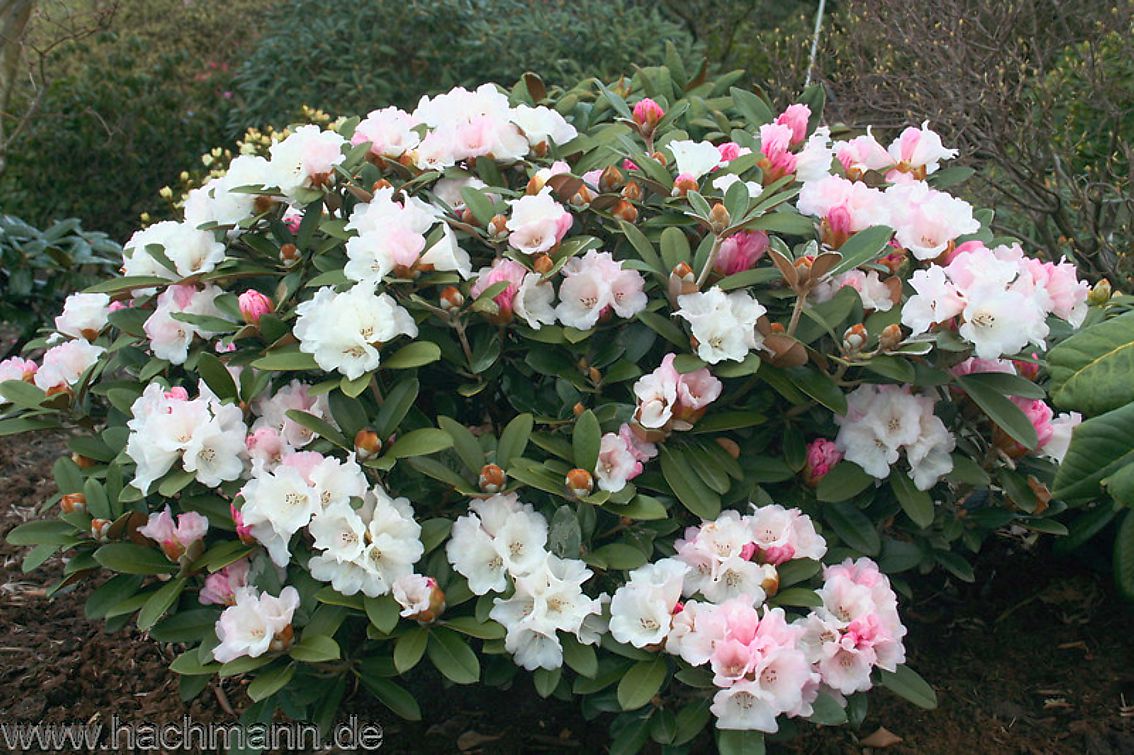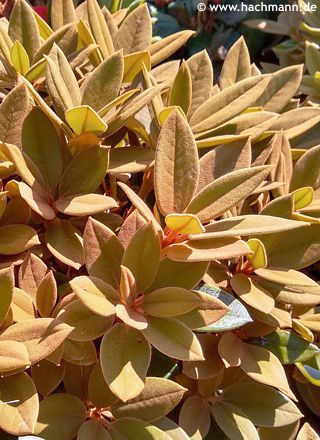Rhododendron 'QUEEN BEE' rhododendron


Rhododendron
Rhododendrons are reliable, beautifully flowering, evergreen shrubs of variable origin: S.W. China, Himalayas, Northern America, and even Europe. The original species were hybridized several times for better performance so in the 1950´s there were more than 10,000 cultivars registered, and the number keeps increasing.From late April to mid-May, deep pink buds burst into almost white flowers with pale pink hues closer to the throat. Its habit is rather compact and mounding due to its first parent, and the plant tolerates full sun. It grows to about one meter in height and a little more in width. Although its flowers are pretty, it is mostly cultivated for the fantastic colour of young leaves which is present on the plant in various portions throughout the growing season. In the ericaceous border it is best combined with similar rhododendron and azalea specialties with attractive foliage colour.
The variety was bred by an important American collector and breeder of rhododendrons Warren Berg (1923-2006) and registered in 1969. He was a life member of the ARS (American Rhododendron Society), where he received the highest honour, the Gold Medal for his lifetime contribution to the species. Although his civilian occupation was completely different - he was a commercial pilot for 35 years after World War II - he often went on expeditions, especially to Asia (China, Japan, South Korea, Bhutan, Tibet), where he collected seeds and experience about many so far unknown species which he then studied and introduced in America. Regardless of his age, he was a computer enthusiast and was able to teach much younger colleagues how to use computers at work, ensuring greater awareness of everyone’s achievements. His friends all describe him as a generous enthusiast who sent his cuttings and newly bred varieties not only to the Botanical Garden in Federal Way, Washington, specialized in rhododendrons, and where he sent over 900 of his plants to, but also enjoyed giving them away to other enthusiasts and plant lovers whether for further research or just to make them happy in a private garden.
For a better-looking plant deadhead rhododendrons where possible. They are not supposed to be pruned but may be rejuvenated if needed. You can either wait until the flowers have bloomed or prune it immediately after all frosts in late winter. This will result in quicker regeneration since the sap will wake up dormant buds as opposed to feeding the flower buds which will lead to a certain level of exhaustion. The roots are shallow, spreading to sides in search for nutrients. Never plant them too deep. The soil must well-drained, acidic (of pH value 4.5-5.5), rich in humus, cool, and always moist. Ideal soil mixture is peat with lime-free, light garden soil topped with leaf-mould. It is hardy to at least -23 °C (USDA zone 6) but is expected to withstand a few degrees lower (results of further trials pending).
Last update 27-12-2022
Goods are shipped all over Europe. For Russia and U.K. and for further details please read about SHIPPING OPTIONS HERE.
Are you interested in a serious discount for orders NOV-FEB? Check your options here.
THE PRICES INCLUDE VAT of 15%. For quick conversion you can use 1 CZK = approx. 0.04 EUR
- STANDARD QUALITY - Plants of this group are 1st class quality with number of branches and overall density adequate to their size and age, considering they were container grown.
- DE LUXE QUALITY - This label guarantees a luxurious quality of manually selected plants that, compared to their height and age, are exceptionally dense and beautiful.
- EXTRA - These plants are usually mature and bigger specimens with exceptional overall appearance.
- STANDARD (as described in the plant form) means a tree with a trunk of 190-210 cm and a crown at the top, unless specified differently. The commercial size for trees is their girth measured in the height of 1m from ground.
- HOBBY - These plants are of the same quality as our standard-quality plants but younger and therefore cheaper.
- SHRUB - a woody plant with branches growing bushy from the ground level.
- HALF-STANDARD or MINI-STANDARD - a small tree with shorter trunk, its size is usually specified.
- FEATHERED - These are trees with branches growing already from the base of the trunk and up along the stem.
- GRASSES and PERENNIALS - Sizes given usually read the diameter of the pot or the clump, as specified.












